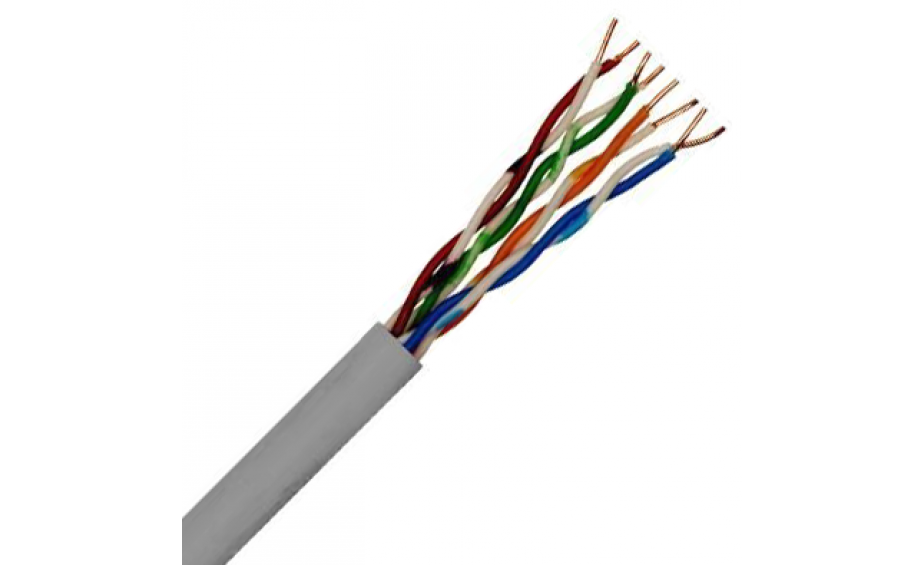Exploring the Advancements in Networking: CAT5 vs. CAT6 Cables

In the realm of networking, CAT5 and CAT6 cables have
emerged as dependable, providing the backbone for seamless data transmission
across various devices. These cables are fundamental components in setting up
wired networks, whether in homes, offices, factories, warehouses, or data
centres. Understanding the differences and advantages of CAT5 and CAT6 cables
is crucial for optimising network performance and ensuring efficient data transmission.
What are CAT5 and CAT6 Cables?
CAT5 Cable:
CAT5, short for Category 5, is an older generation of
Ethernet cable. It has been the standard for network installations for many
years. CAT5 cables are capable of supporting data transmission speeds of up to
100 Mbps and are suitable for voice and data applications. This is provided you
install the 100% pure copper version.
CAT6 Cable:
On the other hand, CAT6, or Category 6, provides a more
advanced variation of Ethernet cables. CAT6 cables can handle data transmission
speeds of up to 1 Gbps (Gigabit per second), making them ideal for high-speed
data transfer and applications that require large bandwidth.
Key Differences
1. Data Transmission Speeds:
CAT5 supports data transmission up to 100 Mbps, while CAT6
can handle up to 1 Gbps. This significant difference in speed makes CAT6 the
superior choice for modern networks requiring faster data transmission.
2. Bandwidth:
CAT5 cables have a bandwidth of 100 MHz, whereas CAT6 cables
offer a bandwidth of 250 MHz. Higher bandwidth allows for greater data capacity
and reduced data loss or interference.
3. Interference and Crosstalk:
CAT6 cables are designed with more stringent specifications
to minimize interference and crosstalk, ensuring a more reliable and stable
connection compared to CAT5 cables.
4. Backward Compatibility:
CAT6 cables are backward compatible with CAT5 and CAT5e
systems, providing the flexibility to upgrade the network infrastructure while
maintaining compatibility with existing devices.
Box Sizes and Installation
Both CAT5 and CAT6 cables are typically available in 305m
(approximately 1000 feet) boxes. This standard packaging allows for convenient
installations, especially in larger projects where longer cable runs are
necessary. The length provided in a single box is often more than sufficient
for most networking installations, reducing the need for splicing or joining
cables.
Variations of Cat5 and Cat6 ethernet cables
Variations of CAT5 exist for professional installers and
these include the very popular UTP, unshielded twisted pair. FTP (foiled
twisted pairs) along with STP (Shielded twisted pairs) denote UK recognised
screened versions. They are also available with multiple outer sheath options
such as LSZH or LSOH which mean Low Smoke Zero Halogen. In the event of a fire,
LSZH/LSOH versions produce a minimal amount of dangerous toxic fumes. Duct
Grade, typically with a black sheath and the increasingly popular SWA version
is also known as Cat5 Steel Wire Armoured.
Conclusion
CAT5 and CAT6 cables have undoubtedly revolutionised the way
we establish and maintain network connections. While CAT5 has served as a
reliable choice for many years, the evolving technology demands faster and more
efficient data transmission, leading to the emergence of CAT6 cables.
Understanding the differences and advantages of CAT5 and CAT6 is essential for
making informed decisions in networking setups.
For modern, high-speed networks, CAT6 stands out as the
preferred choice due to its ability to handle significantly higher data
transmission speeds and provide a more robust and interference-free connection.
As technology continues to advance, embracing CAT6 cabling will ensure that
your network is optimised for the future, meeting the ever-increasing demands
of the digital age.
